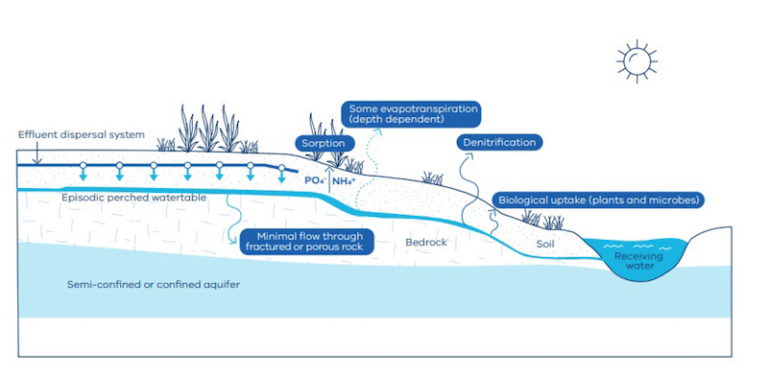Introduction:
Aerobic and anaerobic processes are two fundamental approaches to wastewater treatment, each with distinct mechanisms and resulting in different wastewater quality. Aerobic processes involve the use of oxygen to break down organic matter through the activity of aerobic microorganisms. These microorganisms thrive in oxygen-rich environments and effectively decompose organic pollutants into carbon dioxide, water, and biomass. The presence of oxygen accelerates the breakdown of organic matter, leading to relatively rapid treatment times. Aerobic treatment processes, such as activated sludge systems, typically produce high-quality effluent with low levels of biochemical oxygen demand (BOD), suspended solids, and pathogens. Additionally, aerobic processes often result in lower concentrations of odour-causing compounds and more stabilised sludge.

In contrast, anaerobic processes occur in the absence of oxygen and rely on anaerobic microorganisms to decompose organic matter. These microorganisms break down complex organic compounds into simpler substances such as methane, carbon dioxide, and ammonia. Anaerobic treatment is generally slower than aerobic treatment due to the lower energy yield of anaerobic metabolic pathways. As a result, the rate of organic matter degradation is reduced, and the overall treatment time is longer. Anaerobic processes are commonly used for high-strength industrial wastewater and sludge digestion. The effluent from anaerobic processes typically contains higher levels of residual organic matter and ammonia, and may require further treatment to meet discharge standards. However, anaerobic processes have the advantage of producing biogas, which can be captured and used as a renewable energy source.
The speed of assimilation in aerobic and anaerobic processes also differs significantly. Aerobic processes facilitate rapid assimilation of organic matter due to the high metabolic rates of aerobic microorganisms in the presence of oxygen. This leads to quicker reduction of organic load and faster stabilization of the wastewater. Aerobic systems can achieve significant reductions in BOD and suspended solids within hours to days, making them suitable for applications where quick treatment is essential. Additionally, the continuous supply of oxygen in aerobic systems supports a diverse microbial community that enhances the overall treatment efficiency and robustness against fluctuations in wastewater characteristics.
Anaerobic processes, while slower, are highly effective for treating concentrated waste streams with high organic loads. The assimilation of organic matter in anaerobic systems can take several days to weeks, depending on the complexity of the wastewater and the operating conditions. Despite the slower treatment rates, anaerobic processes are energy-efficient and generate valuable byproducts like biogas. They are particularly advantageous for treating wastewater in regions with limited access to energy resources or where sustainability is a priority. To optimize the treatment outcomes, anaerobic effluent often undergoes subsequent aerobic treatment to further reduce residual contaminants and improve effluent quality, combining the strengths of both processes for comprehensive wastewater management.
In summary, the primary differences in wastewater quality between aerobic and anaerobic processes lie in the effluent characteristics and the treatment speed. Aerobic processes yield high-quality effluent with low levels of pollutants and pathogens, and they operate more rapidly due to the presence of oxygen. Anaerobic processes, while slower and producing higher levels of residual contaminants, are energy-efficient and generate biogas. Understanding these differences is crucial for selecting the appropriate treatment method based on the specific requirements and constraints of the wastewater management scenario. For more information regarding Land Capability Assessments for Septic speak to Chris or Request an obligation free quotation.





